“Big Boat” racing rumbles on in San Francisco
Published on September 12th, 2014
San Francisco, CA (September 12, 2014) – There is one person who can tell the full story of the Rolex Big Boat Series, in amazing detail, starting from its humble beginnings. It is the man whose idea it was to start it back in the 1960s: St. Francis Yacht Club’s Staff Commodore (1975) Robert C. Keefe, who at the age of 84 has been a member for 65 years and remembers the early days of the then-called St. Francis Perpetual Trophy Series as if it were yesterday.
As a traveling sales manager for (and eventually President of) Barient Winches, Keefe spent plenty of time in Southern California, getting to know the area’s principal yachtsmen. Recognizing that the respective collections of fine yachts there and in northern California should get together, he suggested establishing a race. It was 1963, and there would be time to organize it for 1964.
“The Commodore said it wasn’t the worst idea in the world, but we needed an organizer, someone to ramrod this,” said Keefe, who was the natural choice for filling the role. “The southern California sailors said ‘we’d really like to do it, but we have to stay on our home waters for the events on our sailing calendar. When it tapers off later in the year, we’ll come to San Francisco.’ That’s how September came about.”
That first year, the yacht club invited 25 boats to sail in its series, the vast majority of them over 60 feet long. “They were mostly from Southern California but we asked some from New York, Florida, Boston…not so much because we thought they’d drop in, but we wanted to play with the big boys. We ended up with four from here and four from Southern California.”
The inaugural regatta was raced on a Monday, Wednesday, Friday and Saturday, so the out-of-town sailors could go back and forth to their offices. “That worked well, and in ’65 a few more boats came from San Diego, some from Seattle…even Storm Vogel arrived from Holland, sailing through the Golden Gate. In ’67, the regatta ran a little out of gas only because California boats began going to the Eastern Seaboard to race, but we still had a big fleet of 50 footers (about 20), so we created a second trophy for them. Then in 1970, big boats matriculated back to the West Coast.” (Today, specially engraved Rolex timepieces are traditionally awarded to winners of the St. Francis Perpetual Trophy; the City of San Francisco Trophy; the Richard Rheem Trophy; the Keefe-Kilborn Memorial Trophy; the Atlantic Trophy; and the Commodore’s Cup.)
Keefe continued “ramrodding” the event for ten years, and it was his and his fellow club members’ fine salesmanship that convinced some of the greatest boats of all time to compete. They included the 67’ yawl Chabasco from Newport Beach and John B. (Jim) Kilroy’s various Los Angeles-based Kialoas (Kialoa II competed in the inaugural event, finishing second to Jim Wilhite’s 63-foot Sparkman & Stephens yawl Athene, which won the original St. Francis Perpetual Trophy.)
“Jim was the guy who would say ‘this has got to be the best place in the world for this kind of sailing,’” said Keefe. “This is no hurricane gulch, but certainly we have 15, 18, 20 knots every day. Then if you want light air, you can go over to Marin County and on the same day have 10-12 knots of breeze. The range of wind the gods gave us here in San Francisco did wonderful things for us. We had this wonderful asset.”
Keefe recalls the very first race of the first series, which started at noon and went out under the Golden Gate Bridge into the ocean. “We didn’t get back until midnight. God love it out there, but besides being cold, wet and miserable, that’s not what the sailors had come for. They wanted to have good, fair racing in our little puddle right out there, between the bridges and on the waterfront here,” said Keefe, pointing to the water that famously laps at the club’s northern facing side and presents the Golden Gate Bridge and Alcatraz Island in one sweeping glance.
Keefe also remembers the endearing moments that are typical of those that keep many participants coming back year after year, if not decade after decade. “Roy Disney had many occasions to have his boats here (Shamrock and various Pyewackets). The first year Rolex was a presenting sponsor, it was opening night and there was a watch display out front. When I went by, what was sitting on top of the glass case but a Mickey Mouse watch, with a nice little stand and a big dial. That really kind of broke everyone up. I thought it was hilarious, but Roy never admitted to it; maybe his crew cooked it up.”
“We have a lot of fun,” said Keefe. “That’s one reason these guys come back. It’s an enjoyable experience — the racing, the club and San Francisco itself.”
Friday race report…
The boats aren’t all as big as they used to be at the Big Boat Series, but Kame Richards (Alameda, Calif.), today’s Boat of the Day winner, had a theory about this: “I think that historically we used to have one really special thing that we did for fun and that was sailing. We no longer have one thing; we have five things that we do for fun in addition to sailing. Sailing hasn’t changed; personalities have changed.”
For him, and the 101 sailors competing here, what matters most (after the fun) is the hard-core competition. Richards, sailing his Express 37 Golden Moon, claimed two victories today, adding them to his perfect score line from yesterday.
“It’s not as easy as it looks,” said Richards, who has been racing at this event for upwards of 35 years and racing in the Express 27 Class for 12 years. “We’ve never done this well before; we’ve won before, but right now we have four points and the next closest boat has ten, which is nice, but uncommon.”
“What I enjoy about sailing is how hard it is. It is exactly like running a business. You have so many resources, and as a manager, you have to marshal your assets. We’ve been working on this for a long time.”
In the J/120 Class, Barry Lewis’s Chance also has a reputation for making it on to the podium, and this year the team has protected its first place position that it initiated yesterday. “Each day the margin of error gets smaller and smaller at this event, and each boat steps up their game a little more,” said Lewis, adding that there is a strong fleet of competitive boats that race each year, including David Halliwill’s Peregrine which is currently biting at his heels, only one point behind in second.
“This year we have some new boats racing, including the Japanese team onboard Julian, which is super-fast and very competitive. In this fleet, if you make a mistake it will cost you big. Our game plan moving forward is to minimize mistakes, sail fast upwind and get great starts.”
Also holding on to class leads established yesterday are Bruce Stone’s J/105 Arbitrage, Dorian McKelvy’s J/111 Madmen and Don Jesberg’s Melges 24 Viva.
Report by Media Pro Intl. Photo by Chris Ray.


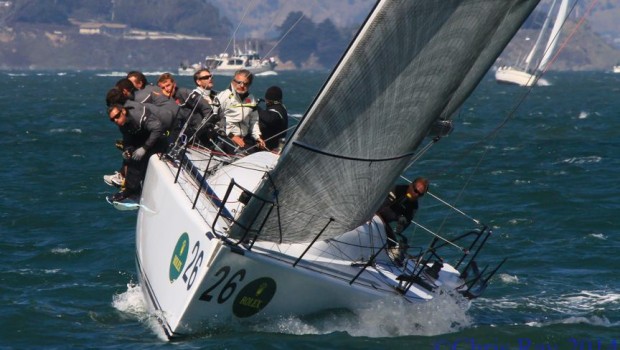


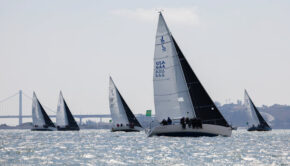
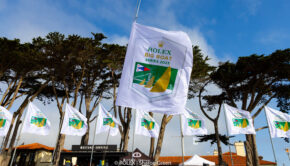
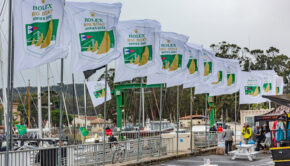
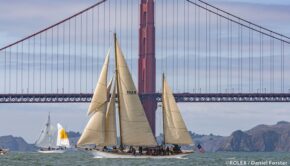
 We’ll keep your information safe.
We’ll keep your information safe.